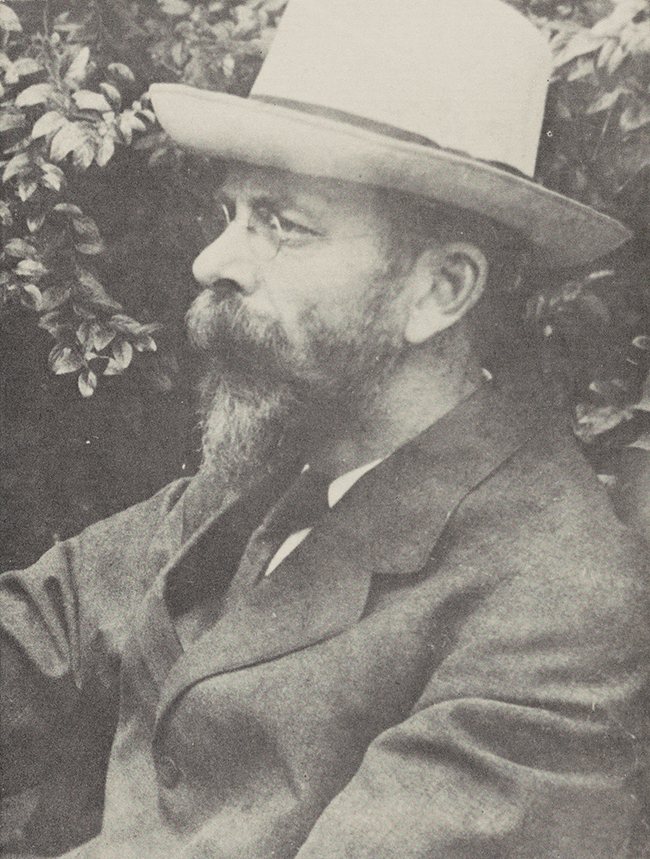Civil engineer ran the city’s first trade school and built his own observatory. Fund at The Trust supports scholarships.
J. Ernest Grant Yalden (1870-1937)
“At noon one day in the early spring of 1919, a tall, angular man with a pointed beard and twinkling eyes wandered into my New York office and told me he had a 3-inch telescope and wanted to know what to do with it. I told him. In 1925, he became president of the American Association of Variable Star Observers.”
The man was James Ernest Grant Yalden. Writing in a 1937 issue of Popular Astronomy, David B. Pickering remembered Ernest, as he came to be called, as a Renaissance man of the 20th century—astronomer, educator, administrator, outdoorsman, navigator, seaman, mineralogist, photographer, musician, draftsman, inventor, and author.
“His talents were many and diverse,” Pickering wrote. “Care and precision and a joyous enthusiasm marked each step of his progress in whatever he had in hand, and never was he too busy—too bound to his task—to stop and lend a helping hand.”
Ernest was born in England on February 6, 1870, in the London suburb of Brixton. His father’s family had been prominent in public life since the time of William the Conqueror. In the 12th century, Geoffrey Yalden, high sheriff of Winchester, protected the city’s Flemish guild weavers by defying Henry II, the bankrupt king of England, when Henry threatened to seize the weavers’ properties. Three other Yaldens served as mayor of Winchester in later centuries.
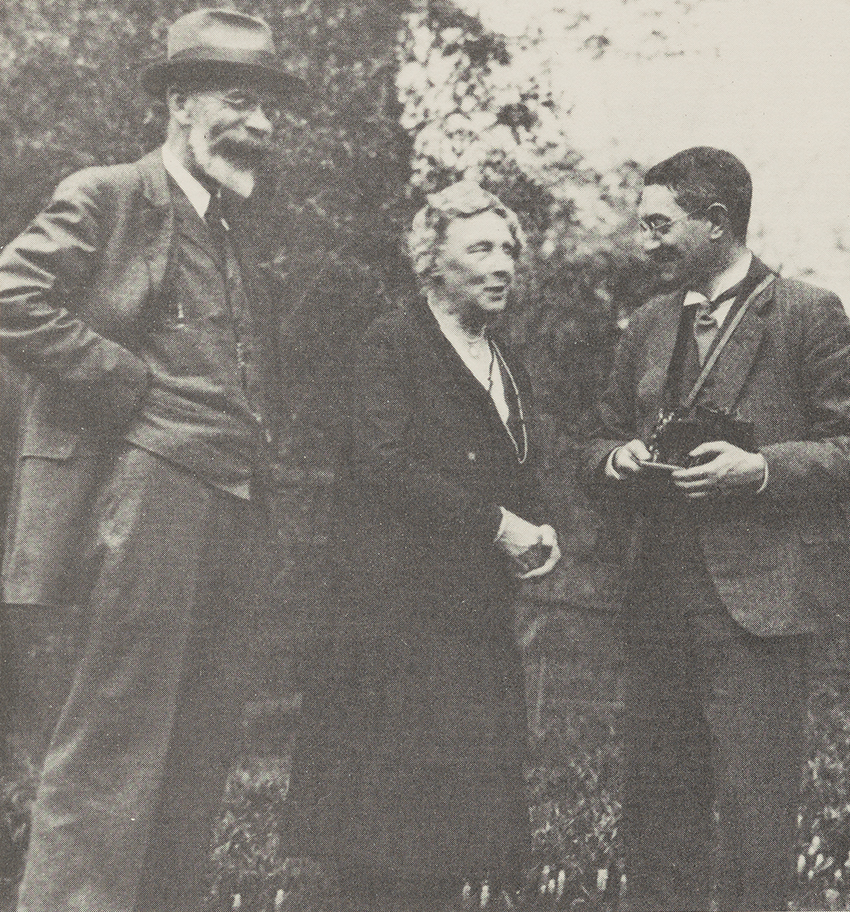
Ernest’s father, James, was hired by the city of Newark to organize its accounting system. He came to the United States to do that, and later helped professionalize accounting in this country. He was the first president of the American Association of Certified Public Accountants.
Ernest arrived in America at age 12 and attended the Riverside Academy, a military school in Poughkeepsie, New York. There he showed a keen interest in the sciences and was particularly adept at mathematics. He continued his education at New York University, where he was elected to Phi Beta Kappa and, in 1893, received a Bachelor of Science degree in civil engineering. Upon graduation, he went to Pittsburgh to work as an engineer for the Carnegie Steel Company. There he met and began to court Margaret Lyon, whose father, James Lyon, was a leader in the city’s glass industry. In 1895, Ernest and Margaret married.
Ernest’s personal life was thriving, but after a year in Pittsburgh in the steel industry, he felt ready for a career change.
Back in New York City, plans were being made for the creation of a special new school to prepare uneducated Jewish immigrants for jobs in construction and engineering—to teach boys and young men practical skills that would help them earn decent incomes. The idea for the school came from the trustees of the Baron de Hirsch Fund in America, established by Baron Maurice de Hirsch (1831-1896), a German-born Jewish philanthropist.
By 1894, the trustees of the Baron de Hirsch Fund began looking for a superintendent to design a curriculum and run their school. J. Ernest G. Yalden, an interested candidate, advocated modeling the school on the English apprenticeship system—a “learning-by-doing” system that, in the United States at the time, was considered experimental. The concept of hands-on experience appealed to the directors, along with Ernest Yalden’s “training and experience, combined with a remarkable fertility of ideas and sober judgement,” according to “History of The Baron de Hirsch Fund” by Samuel Joseph, 1935. Ernest got the job and spent the next 25 years working hard at it.
Under his direction, the trade school attracted much interest and attention. Classes were run as shops; instructors acted as foremen and students as workers, learning carpentry, machine engineering, plumbing, painting, and printing. The school grew; enrollment was healthy.
Ernest and Margaret settled in Leonia, New Jersey, where Margaret pursued her interests in theater, literature, and current events by working with civic and cultural organizations. She helped establish the Leonia Public Library and took a special pride in its development.
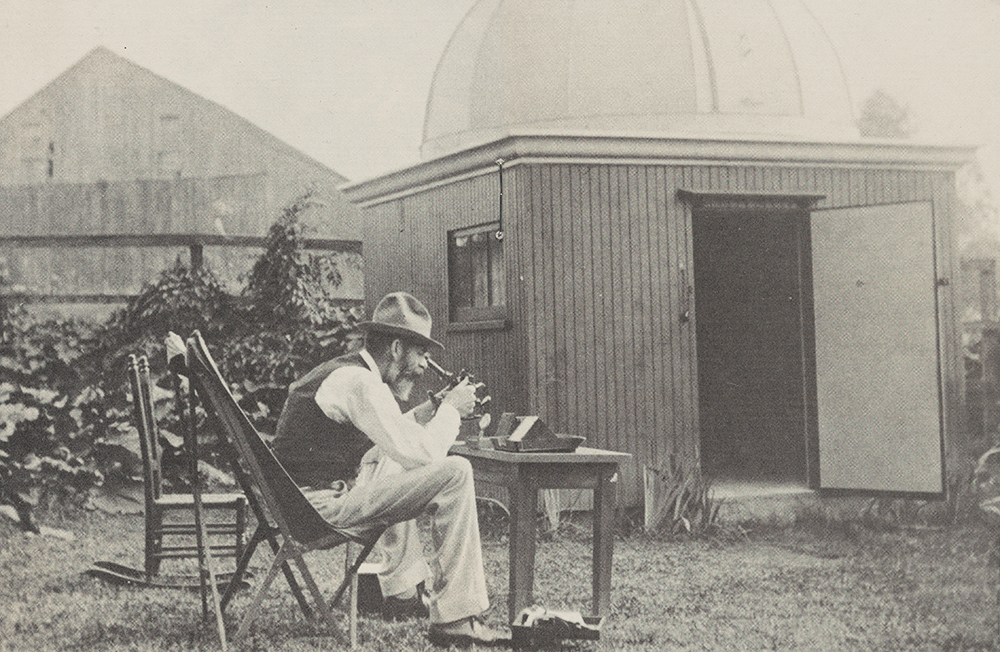
During the years Ernest directed the Baron de Hirsch Trade School, he pursued many hobbies and avocations after hours. When he retired in the 1920s, he was able to devote even more time to them, and in 1932 The Bergen Record reported them at length in a profile:
“Yalden is a nature lover. His home on Woodridge Place says that. A cozy, old-fashioned house, it is set among lofty firs and maples set out years ago by the scientist. In the rear is a garden in which he spends many hours.
“He is a revered figure in Leonia. On an afternoon, he may be seen walking through the town with Biddle, his rust-colored cocker spaniel. He is popular with high school students and has lectured for the high school mathematics club on many occasions.”
The newspaper reported that Yalden had organized a section of the American Association of Variable Star Observers (AAVSO) to observe occultations—the passage of celestial bodies in front of one another—but emphasized:
“While astronomy plays a major role in the life of this noted Leonia scientist, it is by no means his sole occupation. Confirming his belief that ‘hobbies keep one out of mischief,’ Prof. Yalden plays with no less than fourteen of them. Every one of them he is in love with, for he also maintains that it is best to work at what one loves.”
Ernest Yalden, The Bergen Record reported, designed and constructed sun dials “in all shapes and sizes”; possessed a valuable library of texts on astronomy, mathematics and mechanics; was a seasoned sailor who had “the tang of the sea in his veins”; and invented a camera in 1897 along the same lines as the Graflex camera, which arrived on the market before Ernest was able to patent his.
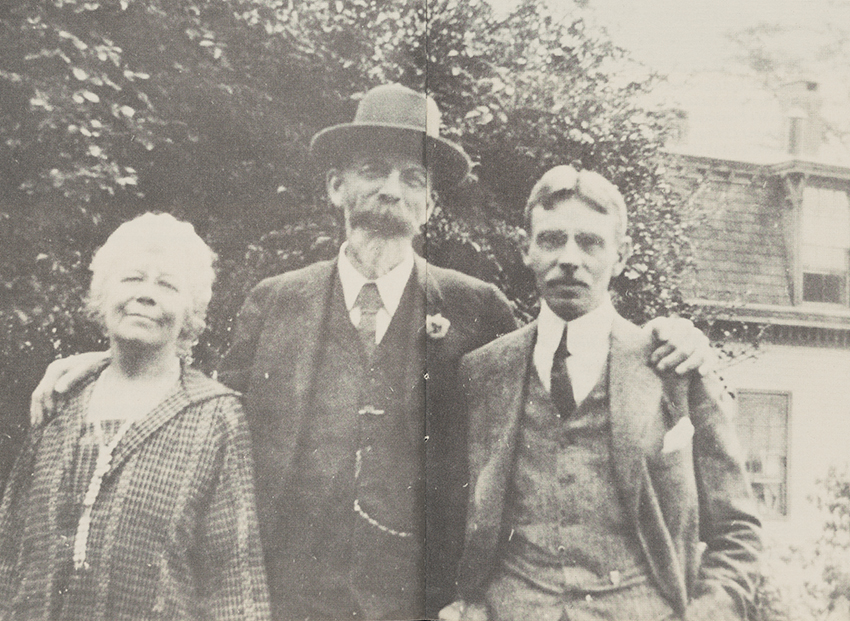
this picture with his wife, Margaret, and William Olcott.
Perhaps many Leonia residents who read the Record’s profile already knew him as “the man with a big dome at his house.” For Ernest had designed and supervised the construction of his own observatory, where he installed sophisticated equipment to examine the movements of planets and stars.
He also developed a new tent—the Yalden tent, which was sold by camping equipment dealers.
As a navigator, Pickering wrote, Ernest Yalden “had once piloted a great steamer from New York to Bermuda by dead reckoning alone,” trained merchant marines as navigators during World War I and built many small crafts, from canoes to yawls.
Ernest founded the Mineralogy Club of New York and the Whetstone Club, a group of local men who met regularly to discuss their hobbies.
He was fascinated with sun dials, published a monograph on the subject for the Museum of Industrial Arts in New York and built one for the Marine Biological Laboratory at Woods Hole, Massachusetts. David Pickering described it as “an ornate stone shaft eleven feet high on which are five separate dials. ”
Music also played a role in Ernest Yalden’s life. He not only organized and conducted an orchestra in Leonia, arranging scores for the various instruments, but he also performed as clarinetist.
On Feb. 22, 1937—16 days after his 67th birthday—Ernest Yalden suffered a heart attack and died at home.
At the AAVSO meeting three months later, he was remembered fondly by a friend who said, “Everything he touched bore the marks of the master craftsman’s care and skill. He sent me once as a gift a small metallic measure with the quotation from (German astronomer Johannes) Kepler: ‘To measure is to know.’
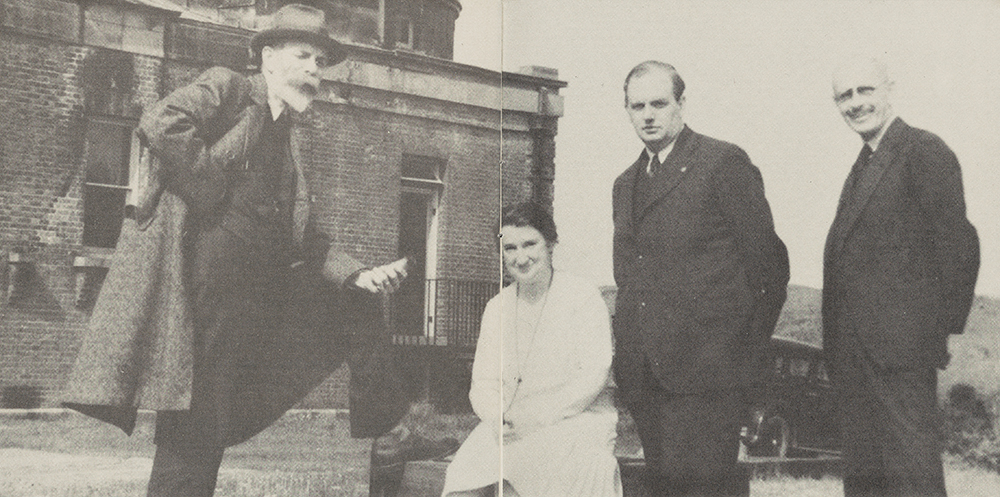
“Alert to the last, eager, patient, busy, deeply sympathetic with all the wonders of earth and sea and sky, he was also, as (The Atlantic’s editor James Russell) Lowell says of (Abraham) Lincoln: ‘Fruitful and friendly to all humankind.’ ”
“He was delightful, full of fun,” another AAVSO member recalled more than 40 years after Ernest’s death. “He was very human and very lively in meetings. He was full of ideas and had a lot of stories to tell.”
David Pickering offered still another tribute to Ernest Yalden in 1937:
“By his example we have learned that patience and thoroughness bring skill and success; that doing things for yourself brings independence; that, loving life, we should learn how best to use it.”
Margaret Yalden, who outlived her husband by more than 16 years, established the J. Ernest Grant Yalden Memorial Fund in The Trust to provide scholarships for children from the Leonia, New Jersey, area to pursue higher education.
